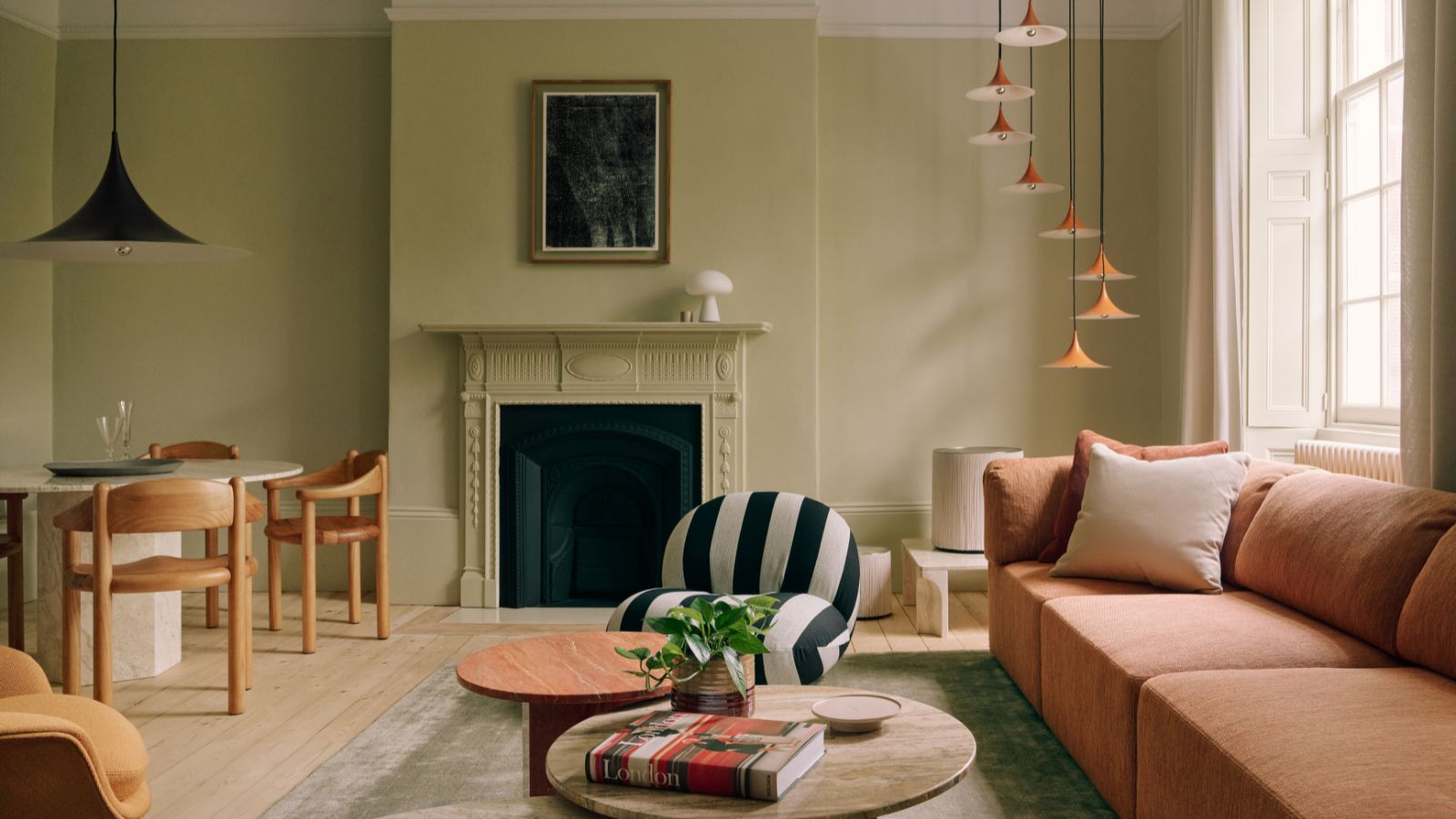
Using color in interior design can be quite intimidating. Bright hues and exciting patterns are lively, but bringing them into your home takes commitment. But luckily, introducing a bit more color into your home doesn't have to lead to an all-out, maximalist design scheme. Instead, tasteful touches of vibrant color can level up even the most neutral home – all while complementing a calming color palette.
Global design company GUBI just proved that you can introduce playful pops and sweeping swaths of color without taking over an entire space; with the opening of their brand-new, first-ever showroom in London, they mastered a sleek style that's at once colorful and neutral. Displaying timeless furniture in stylish arrangements (across four floors of a classic Clerkenwell townhouse), GUBI's use of color makes the use of bold hues appealing for everyone – even staunch minimalists.
To get the brand's insight on choosing a color scheme for your entire home – and blending vibrant color with more subtle shades – we spoke with Marie Kristine Schmidt, GUBI chief brand officer. Marie shared more about GUBI's stunning spaces, the role furniture plays in creating a color scheme, and her favorite places to inject a bit more color. This is what she had to say.
How to use color in a calming, neutral way in interior design

Using color in a stylish way requires more than a bucket of paint. Instead, each and every piece of furniture and decorative accessory brought into a space contributes to its overall palette. By paying careful attention to the hues you select, plus how they'll interact with one another when sitting side by side, you'll be left with a timeless selection of shades that won't let you down.
In this space, a navy blue accent wall (complete with an ornate fireplace) adds an element of drama, without overwhelming the otherwise neutral palette. Because the deep shade is layered with lighter blue dining chairs and a white, gold and wood foundation, the space still feels quite neutral and calm. When designing your own home, bear in mind how the room will bend with the rest of the space as well – each space should feel distinct, but not entirely separate.
'We strive to give each room its own distinct identity while ensuring an overall sense of coherence throughout the space. Despite using a diverse array of colors and textures, we achieve harmony through meticulous curation and a deep understanding of how colors work. Additionally, the shapes of our furniture pieces play an essential role in creating a sense of space and harmony within the room,' says Marie.

You won't need to douse the room in color, but it's wise to pick out a small handful of colorful elements that'll define the space and pull the whole scheme together. Marie says that 'incorporating colorful design elements into a neutral or minimalist space can be achieved by strategically selecting statement pieces.'
'These pieces act as focal points, adding striking pops of color without overwhelming the room. For instance, a bold blue sofa in a neutral setting can instantly draw the eye and create a captivating anchor point within the space,' she says.
Combining bold hues with sleek, smooth shapes is a simple way to ensure the design scheme doesn't go over the top. Plus, seek out neutral and colorful shades of paint that share the same undertones for a coordinated look. By sticking with a cohesive color scheme, even the brightest piece of statement furniture won't look out of place.
'Remembering that relying solely on neutral tones can risk a space feeling bland, incorporating carefully chosen colorful elements adds depth and visual interest without going overboard,' Marie adds.
How to use furniture to inform your home's color scheme

'Furniture plays a pivotal role in shaping the overall color palette of a design scheme. At the GUBI House, each floor boasts its own distinctive color scheme, with furniture selected in complementary hues and textures to establish a specific ambiance,' says Marie.
If you're not quite ready to take colorful paint to the walls, furniture is a great way to introduce a bit more vibrancy into your space. You'll be able to bring more life to your space with just one or two brightly hued pieces. After you've made your selections, 'strategic layering of lighting and accessories' will 'add depth and amplify the atmosphere within each of the rooms,' says Marie.
'For example, on the ground floor, green and blue hues dominate, creating a cool tone that is balanced by warm elements such as lamps with brass and bamboo shades. Similarly, upstairs, while the walls may feature cooler colors, the furniture introduces warmth, contributing to a harmonious balance. By incorporating a variety of materials and textures, we elevate the overall feel of the space, creating a cohesive and visually stimulating ambiance,' she adds.
Whether you're working GUBI pieces into your design scheme or simply looking to give your living room a colorful boost, the brand's showroom provides endless inspiration. Opt for elegant, curved furniture in bold, vibrant hues, and you'll retain your personal style while stepping tastefully out of the box.







